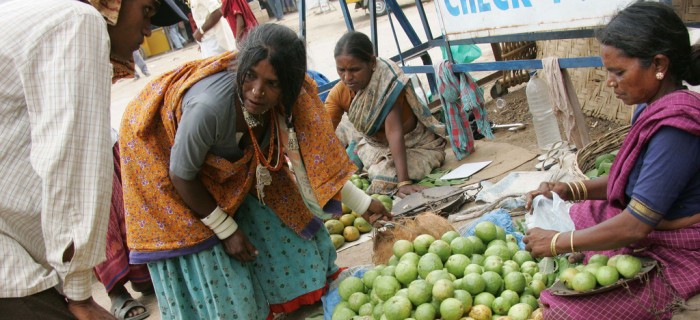Shining India? Economic liberalization and rural poverty in the 1990s
May 2004, Policy Brief No. 10
Executive Summary
In its fifty five years of independence, India has waged a long battle against hunger and poverty. Two hundred years of colonial rule built a country incapable of meeting the basic needs of its own population while turning the economy into a conveyor belt for raw commodities destined for the manufacturing industries in Britain. To remedy this situation, the policies adopted by the Indian government after Independence were a broad mix of state-led market-based policies, leaning towards heavy interventionism and high levels of economic protection for key domestic industries. This ‘import substitution’ model was unevenly implemented, and while some industries and sectors benefited, the government was never fully able to wean itself from the influence of powerful Indian elites and their vested interests. Over time, these elites, combined with international pressure, pulled the Indian economy towards an open market. This economic liberalization crept slowly into India’s economy throughout the 1970s and 1980s. But in 1991, precipitated by high levels of debt, India officially committed to full-fledged neoliberal reforms when the Indian government signed onto World Bank and International Monetary Fund loans.
While some have benefited from India’s new economic vision, for India’s poorest, there has been very little to celebrate over the past decade.
The two central components of these neoliberal policies have been the liberalization of India’s private sector and a reform of the public sector. The claim advanced by key members of India’s elites, and by the World Bank, was that the Indian economy needed to be set on a more sustainable path. More than a decade later, the Indian government claims vindication for its direction, with higher levels of income, reduced poverty, and a booming information technology sector—areas that have come under criticism abroad for its success in welcoming ‘outsourced’ jobs.
All is not as it appears, however. In India today, more than 250 million people still live below the official poverty line. Most of them live in rural areas, working on small plots of marginal lands or as laborers on larger farms. The public services meant to ensure a basic standard of welfare have been dismantled or rendered ineffectual, and the private sector has not reached out to those most in need of goods and services. In this report, we peel back the myth of “Shining India” over the past ten years using the government’s own data. We show that while some have benefited from India’s new economic vision, for India’s poorest, there has been very little to celebrate over the past decade.


 Help Food First to continue growing an informed, transformative, and flourishing food movement.
Help Food First to continue growing an informed, transformative, and flourishing food movement.




